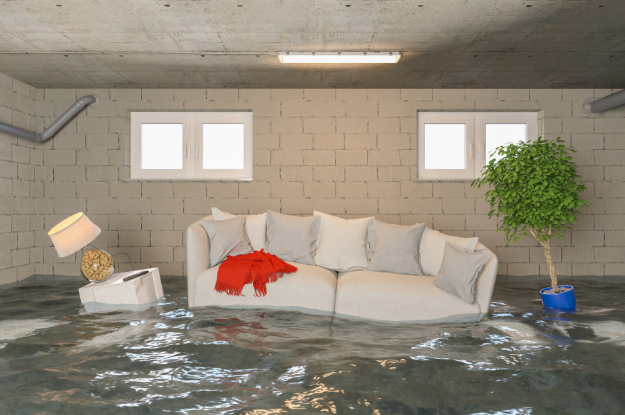Water damage can occur in various ways, including natural disasters such as storms and floods or structural problems such as leaking pipes and faulty equipment. Water damage, if left unattended, can cause significant damage to building structures, mold growth, and the destruction of valuable possessions. Therefore, water damage mitigation is critical to mitigating these hazards, protecting property, and restoring routine. Before you find an expert for water mitigation in Boise ID, here’s what you should know about water damage mitigation, its importance, tactics, relevance, and benefits.
What Is Water Damage Mitigation?
Water damage mitigation is about preventing, reducing, and reversing the adverse effects of water intrusion into a building or property. It encompasses a range of measures and techniques for rapidly detecting, containing and restoring water damage. The main objective of water damage control is to reduce the overall impact, prevent additional damage, and assist in efficiently repairing the affected building.
Techniques For The Elimination Of Water Damage
Professionals apply the following measure to mitigate water damage;
1. Quick Response
In the event of water damage, speed is of the essence. Responding quickly to minimize the damage and avoid additional problems, such as mold growth, is critical. An emergency plan and competent on-site assistance allow for quick action in the event of water damage.
2. Extraction Of Water
The first phase of water damage elimination begins by cleaning the affected region. This involves effectively extracting water using industrial pumps and special tools to prevent further saturation of building materials.
3. Mapping The Moisture
Moisture mapping involves identifying and documenting areas affected by water infiltration using sophisticated methods and equipment such as thermal imaging sensors and moisture meters. With these tools, professionals can determine the extent of the damage and develop a targeted mitigation strategy.
4. Dehumidification And Drying
After removing excess water, professionals dry the damage using dehumidifiers and air movers. These accelerate moisture evaporation from floors, walls, and other surfaces to prevent further damage and suppress mold growth.
5. Restoration And Structural Repairs
After drying, structural repairs restore affected parts to their pre-damage condition. This includes restoring damaged floors, drywall, and insulation and reconstructing structural components if necessary.
6. Mold Removal And Remediation
Mold growth is often fueled by water damage. Remediation experts use special procedures to prevent mold growth and, if necessary, remove existing mold infestations.
The Advantages Of Water Damage Restoration
The perks of water damage restoration include the following;
1. Safety And Health
Water damage can lead to serious health risks due to the development of bacteria, mold, and other pathogens. Timely damage restoration reduces the likelihood of these hazards occurring and promotes a safe working and living environment.
2. Property Protection
Prompt and efficient water damage restoration can help save property from further damage. It eliminates the need for expensive restoration and extensive repairs, preventing future damage.
3. Cost Saving
The overall cost of water damage restoration decreases if damage repair is done on time. Water damage restoration professionals can help prevent further damage and mold growth by treating the problem immediately and reducing the needed repairs.
4. Insurance Coverage
When making insurance claims for water damage, appropriate mitigation measures are critical. Insurance companies often require verifiable proof of damage repairs to process claims promptly.
Choosing Professionals To Eliminate Water Damage
You should only engage qualified professionals to carry out water damage mitigation because of their proficiency in the following respects;
- Experience And Competence
Experienced water damage restoration professionals have extensive knowledge and expertise in various water damage instances. They understand the problem’s complexity and can successfully analyze, reduce and repair the damage.
- Specialized Tools
Remediation specialists can access specialized equipment for drying, water extraction, and dehumidification. These devices aid in the remediation process and ensure a full recovery.
- Comprehensive Assessment
Experts can thoroughly analyze the water damage, uncovering hidden pockets of moisture, construction weaknesses, and potential mold sources to enable targeted damage mitigation.
- Insurance Support
Water damage settlement is a complex and time-consuming process. Thankfully, damage restoration companies often assist with the insurance process, tracking claims and providing the necessary evidence to support the claim. Their knowledge and experience can help simplify the claims process and increase the likelihood of a successful settlement.
Water damage restoration is an important technique that aims to reduce the impact of water intrusion to return affected buildings to their pre-damage form. Professionals limit the hazards associated with water damage, including structural deterioration and mold growth, through measures such as rapid response, dehumidification, water extraction, and drying. Proactive mitigation can save property, reduce costs, and ensure a healthy and safe atmosphere. Therefore, it is crucial to prioritize water damage cleanup and enlist the help of experts to reduce the long-term consequences of water-related disasters.




